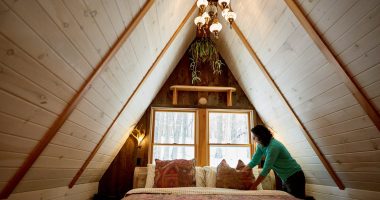
Startup Costs: $2,000 – $10,000
Home Based: Can be operated from home.
Part Time: Can be operated part-time.
Franchises Available? No
Online Operation? No
THE BRIEF
Interior designers make people’s homes and workplaces more beautiful but also more functional. They do this by selecting and blending colors, fabrics, furniture and lighting, in cooperation with the client. Developing the aesthetic sensibilities and business acumen needed for interior design, however, takes a commitment. According to the Bureau of Labor Statistics, candidates for this profession must first earn a degree in the field, then pass the National Council for Interior Design [NCIDQ] qualification exam. Along the way, they’ll learn in depth about building codes, regulations and accessibility standards and specific skills like reading blueprints. And of course no one is going to hire a raw beginner, so taking on some pro bono projects, building a portfolio and working for architectural and design firms is a must, as is ongoing education. Certainly, there is a healthy market here: According to the American Society of Interior Designers’ State of the Industry report in 2018, sales in 2015 — the most recent year recorded — totalled $9.87 billion. As for individual incomes, the BLS reports an average annual pay level for interior designers of $53,370.
ASK THE PROS
How much money can you make?
“[The $53,370 the BLS cites] would not be low for starting out. My accountant just told me that in his experience, the highest end he sees in terms of salary is about $125,000. So you could start pretty low” — Teri Brajewski, interior designer, twb DESIGN Brooklyn, NY
What are the startup costs?
There’s not really a lot. Someone gave me a contract that I cribbed, but eventually I had a contract that was formally reviewed by lawyers. It was really just [a matter of] having a computer and a printer, to get the business started. Interior design is a service, so outside of physically setting up an office, it’s your typical ‘I need a desk, I need a chair, I need a computer’ — and you need to register your business as a DBA or whatever incorporation you want to do, and obtain a resale certification. Outside of that, there aren’t a lot of hard costs to starting a business like this” — Teri Brajewski
What kind of experience do you need to have?
“I started with a bachelor’s in art history and worked in that field; then I went back to school in my late 20s to get an associate’s degree in interior design from the Fashion Institute of Technology (FIT) in New York. I already had a [design] background, having worked in art galleries and art museums; then, while Iwas at FIT, I did part-time jobs at an architectural firm and for a single-person residential firm. At FIT we learned everything from drafting to interior design history to working on projects. During my time at the architectural firm, I learned the more practical side of business: how to access samples and get information from vendors. I learned how to do my job” — Teri Brajewski
What is the most important thing to know about this business?
You have to like to shop! And you have to not just like to design — the 10 percent that is the fun. You need to have the skills to execute it and the business skills to deal with your clients” — Teri Brajewski
The Market
Your clients can be residential or commercial property owners. You can specialize in types of properties like restaurants, hotels or offices, or you can work with all these and residences, too. Or you can specialize in the type of work you do–instead of completely redoing an entire home, you can do shoestring redesign, redecorating a single room using the owner’s existing furnishings in new ways. Network at your chamber of commerce and other local professional organizations. Send brochures to architects and contractors, especially those building spec homes who need a decorated model; follow up with phone calls. Place an ad in your local Yellow Pages. Volunteer yourself as a guest on a local radio chat show and as a speaker at women’s clubs.
Needed Equipment
Some states require an interior design license–check with local professional organizations to find out local regulations. You’ll need a computer system with a laser printer and the usual software, a fax machine, sample books of fabrics and wall coverings, and a tape measure. You can purchase a number of interior-design software programs that let you print out floor plans, 3-dimensional room designs and even change decorating colors. If you’re a computer person, shop around for one that suits you.









